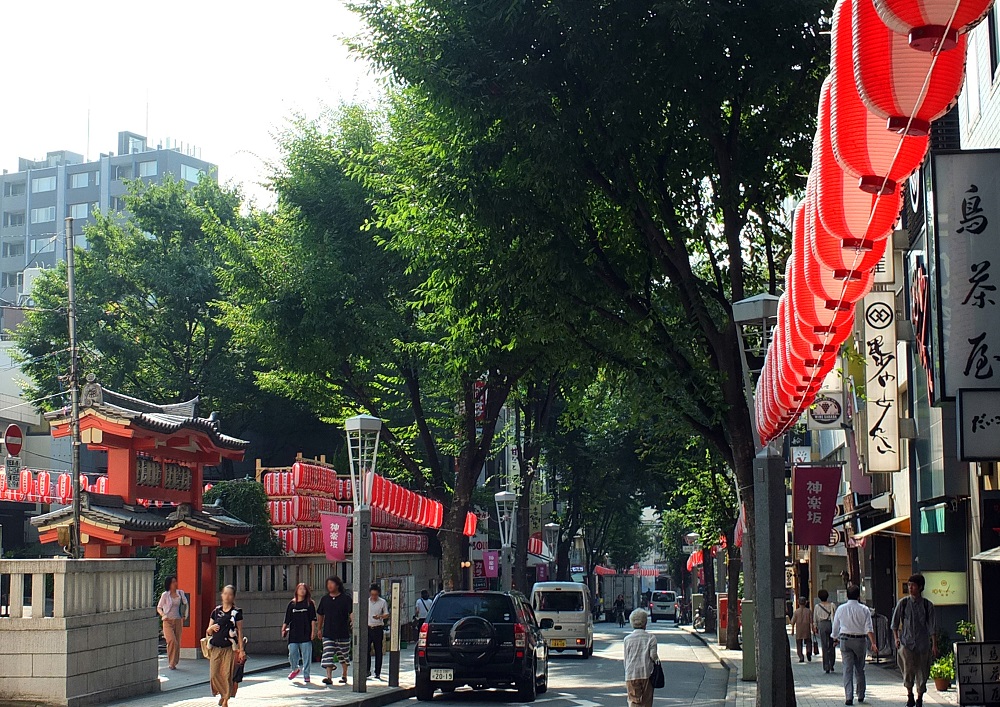- Learn
- Watch
- Walk
Kagurazaka
There are several stories about the origin of the name of this slope. The origin of the name was already forgotten by the mid-Edo period (around 1700). Various stories of the origin include: that kagura (Shinto music and dance) performance has been offered on a portable shrine here for the ritual of Ichigaya Hachiman Shrine; that the kagura performance at Wakamiya Hachiman Shrine can be heard at the slope; or that there used to be a kagurado building of Akagi Myojin Shrine, etc.
Due to the opening of Ushigome Station on the old Kobu Line (which later became part of the Chuo Line) in 1895, the area around the slope rapidly developed as both commercial and residential districts. By the late Meiji period (around 1900), this area became the biggest entertainment district in the old Ushigome Ward (which later became part of Shinjuku City). Prospering as one of Tokyo's new entertainment districts from the Taisho period (1912-1926) to the early part of the Showa period (1926-1989), it was called "Yamanote Ginza." Among other various events there, the festival at Bishamonten Zenkokuji Temple was especially popular among people. In those days, Kagurazaka was a place for literary figures, who belonged to the Ken-yusha writers’ society or who contributed to the literary magazine Waseda Bungaku, getting together and creating their works, as well as serving as a town for students of Waseda University.

| Postal code | 〒162-0825 |
| Address | Around Kagurazaka, Shinjuku-ku, Tokyo |



